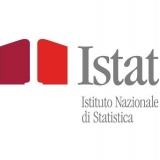
 ISTAT
ISTAT
Italian report: Museums, Archaelogical Sites and Monuments in Italy
- WTI Magazine #113 Mar 15, 2019
-

 ISTAT
ISTAT
In 2017, Italy's cultural heritage boasts 4,889 public and private museums and similar institutions open to the public. Of these, 4,026 are museums, galleries or collections, 293 archaeological areas and parks and 570 monuments and monumental complexes.
Museums and other museum-like exhibition structures recorded a historical peak of 119 million admissions in 2017 (+7.7% compared to 2015), divided as follows: 57.8 million museums, 15.5 million archaeological sites, 45.8 million monuments. The biggest increase concerns monuments and archaeological sites.
There are 2,371, one out of three, Italian municipalities that host at least one structure of a museum nature. It is a heritage spread throughout the country: 1.6 museums or similar institutions every 38.6 square miles and about one per 12 thousand inhabitants.
The regions with the most museums (29% of the total) are Tuscany (528), Emilia-Romagna (482) and Lombardy (409). In the Mezzogiorno, on the other hand, more than half of the archaeological sites are concentrated (50.8%), while 30.7% are in Sicily and Sardinia.
In Rome and Florence there are almost 200 museums, areas and monuments, but also municipalities with less than 2,000 inhabitants (27.9% of the total municipalities) have a large percentage of museum institutions (16.7%). Some of these have up to four or five institutions in their territories.
Most of the museums in Italy exhibit collections of ethnography and anthropology (12.8%), archaeology (12.7%) and ancient art (12.3%). The number of structures with monothematic collections of materials is increasing (10%).
On average there are 27,000 visitors to each exhibition structure: in 2017 the first 20 museums and similar institutions attracted more than a third of visitors (36.3%) while 28.7% recorded no more than a thousand visitors per year. Rome, Florence and Venice alone attract 36.2% of visitors to Italian institutions.
Two out of three museums (63.1%) are publicly owned and, among these, 2,067 (42.3% of the total) belong to the municipalities. The museums and other state institutions belonging to the competent Ministry are only 478 (9.8% of the total) but attract almost 53 million visitors (44.3% of the total).
Less than half of the Italian institutions (47.9%) provide admission against payment; 42.3% do not have any income from ticket sales. Of these, only one in ten is a state institution.
In addition to managing permanent exhibitions of goods and/or collections, 43.7% of the structures set up temporary exhibitions which, in 2017, attracted 18 million visitors.
Almost two out of three museums (64.7%, mainly in the northern regions) organized educational activities. More than one in three (36%) carried out research activities during the year.
The Italian museum sector employed a total of 38,300 operators, an average of one for every 3,106 visitors (in 2015 there were 45,000, one per 2,400 visitors).
58.2% of the institutes have no more than five employees and only 32.7% have more than 10. In one out of three museum institutes (29.1%) volunteer collaborators work (about 11 thousand in all).
The whole report is available in Italian here.